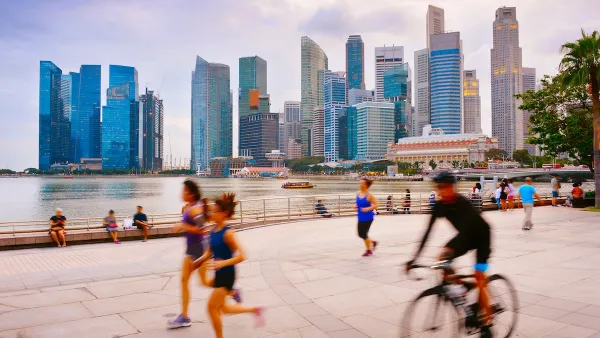A few months ago, I updated a city rating system (available at http://lewyn.tripod.com/livable09) that evaluated cities' "livability" by rating crime rates, transit-friendliness, and cost of housing. Plenty of cities did very well on the first two criteria. For example, New York is now safer than most big cities, and of course is by far the best city in the U.S. for public transit. But its housing costs are dreadfully high. The same was true of Boston and San Francisco (which, if only crime and transit were considered, would rank second and third for livability).
A few months ago, I updated a city rating system (available at http://lewyn.tripod.com/livable09) that evaluated cities' "livability" by rating crime rates, transit-friendliness, and cost of housing.
Plenty of cities did very well on the first two criteria. For example, New York is now safer than most big cities, and of course is by far the best city in the U.S. for public transit. But its housing costs are dreadfully high. The same was true of Boston and San Francisco (which, if only crime and transit were considered, would rank second and third for livability).
By contrast, the most car-oriented cities tended to have very cheap housing. If only crime and transit were considered, my three least livable cities were Jackson, Baton Rouge and Detroit- but low housing costs partially canceled out these disadvantages.
This apparent trade-off creates ammunition for those who argue that subsidizing auto-oriented sprawl reduces housing costs by opening up land for housing, and thus cancels out negative externalities caused by sprawl. On the other hand, it could also be argued that this benefit is itself canceled out by higher transportation costs.
When I decided to place cost of living into my "livability mix" I wondered if there was a happy medium - cities which were less car-oriented than sprawling Sun Belt cities, but still were less expensive than New York or Boston. In fact, I did have some winners: when all three factors were considered, Rust Belt cities such as Pittsburgh and Syracuse clobbered both Sun Belt cities and expensive coastal cities, because they combined low housing costs with mediocre-to-good walking and transit.
But these livability winners (with the exception of Madison, a university town) had something not-so-positive in common: they are declining cities in stagnant regions, a fact which I suspect brings housing prices downward.
In other words, its possible for a city to have decent transit and reasonably priced housing, but in American cities today, only in declining regions with declining urban cores. For example, Pittsburgh has lost more than half of its 1950 population, and its metropolitan area is also declining (though less rapidly).
To the extent that the smart growth movement can succeed in revitalizing cities, its biggest challenge might be: how can Americans do so without suffering from Boston- or New York-size housing costs? It seems to me that this is not an impossible problem to solve- in theory. All we need do is just build a lot more housing to keep up with demand. But given the political constraints on infill development, this may be easier said than done.

Analysis: Cybertruck Fatality Rate Far Exceeds That of Ford Pinto
The Tesla Cybertruck was recalled seven times last year.

National Parks Layoffs Will Cause Communities to Lose Billions
Thousands of essential park workers were laid off this week, just before the busy spring break season.

Retro-silient?: America’s First “Eco-burb,” The Woodlands Turns 50
A master-planned community north of Houston offers lessons on green infrastructure and resilient design, but falls short of its founder’s lofty affordability and walkability goals.

Test News Post 1
This is a summary

Analysis: Cybertruck Fatality Rate Far Exceeds That of Ford Pinto
The Tesla Cybertruck was recalled seven times last year.

Test News Headline 46
Test for the image on the front page.
Urban Design for Planners 1: Software Tools
This six-course series explores essential urban design concepts using open source software and equips planners with the tools they need to participate fully in the urban design process.
Planning for Universal Design
Learn the tools for implementing Universal Design in planning regulations.
EMC Planning Group, Inc.
Planetizen
Planetizen
Mpact (formerly Rail~Volution)
Great Falls Development Authority, Inc.
HUDs Office of Policy Development and Research
NYU Wagner Graduate School of Public Service




























